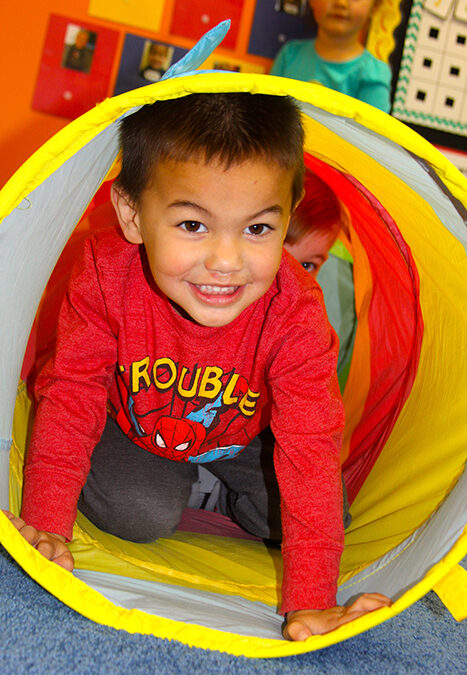Becoming potty-trained is a major milestone in a child’s life, which can also lead to stress and frustration. With the proper approach and sensitivity, potty-training can be a relatively straightforward and stress-free experience. Here, the child education and development specialists at Celebree Learning Centers explain the basics of potty-training your toddler.
Know the Signs of Readiness
Readiness for potty-training does not begin at a specific age. Rather, emotional and physical cues can serve as indicators, letting parents know when their toddler is ready to make the transition. If a toddler exhibits all or several of the signs below, they may be ready to begin potty-training:
- They are interested in the potty-chair, toilet and/or underwear
- They can understand and follow basic directions
- Child can warn parents of their need to go through words, facial expressions or postures
- Child can stay dry for two hours or longer during the day
- Child complains about a wet or dirty diaper
- They can pull down and pull up their pants
Although many children begin to exhibit these signs by the age of two, just as many may not exhibit signs of readiness until age two-and-a-half or older. Let your child transition to the potty at their own pace—attempting to potty-train a toddler before they are developmentally ready can lead to frustration, anxiety and difficulty grasping the concept.
Use the Right Equipment and Language
A potty-chair is designed to accommodate a toddler’s size as they learn to go to the bathroom. Place the potty-chair in the bathroom, and ensure your toddler’s feet can rest firmly on the floor or a stool. Have them practice standing up from, and sitting down on the chair. Letting them decorate the chair with stickers may help toddlers become excited about potty-training as well.
Have your toddler watch you empty the contents of the chair into the toilet, so that they understand how toilets work. Be sure to explain the process with simple, yet correct, terms so that they understand how to talk about the bathroom. Most importantly, maintain a positive attitude, even when a bathroom trip does not go as planned. Positive language will prevent toddlers from feeling shame, and will encourage them to keep trying.
Schedule Potty Breaks and Respond to Your Toddler’s Signs
Scheduling bathroom breaks throughout the day can help prevent accidents, and make toddlers familiar with the idea of regularly using the bathroom throughout the day. Stay with your child as they try to go, and encourage them, even if they can’t go.
If your toddler indicates they have to go to the bathroom—sometimes through squirming, squatting or crossing their legs—walk them to the bathroom quickly. Help them to understand and identify these signs themselves, and teach them the appropriate way to tell an adult they need to use the bathroom. Praise them for signaling that they need a bathroom break, and consider providing incentives, such as stickers or stars on a chart.
Practice Nap and Nighttime Bladder Control After Daytime Potty-Training
Daytime toilet training can often be achieved in two to three months of consistent toilet training. Nighttime toilet training; however, can take months. Invest in plastic mattress covers or training pants, which will help mitigate accidents.
Transition to Underwear
Toddlers who have achieved several weeks of successful bathroom breaks are likely ready to begin wearing underwear. This is a special occasion for children, and having children pick out their own underwear on a special shopping trip can make them feel grown-up and capable. When initially getting used to underwear, avoid dressing toddlers in overalls, belts, leotards, pantyhose or other clothing items that could impede a quick undressing.
Handle Accidents Carefully
Accidents are inevitable during the potty-training phase, and it is important to react in a positive and constructive manner. Toddlers are most likely to have accidents when they are in the middle of an engaging activity, so schedule regular bathroom trips throughout the day. This kind of schedule may consist of bathroom breaks after waking up, after eating, before getting in the car and before going to sleep.
Teach your children to take their body’s own signs seriously, and to react to them quickly. As a parent during this process, it is important to practice patience, understanding that children who have very frequent accidents may not be ready for toilet-training—give your toddler a few months and try again.
Choose an Educational Center that Provides an Environment of Caring and Compassion
Potty-training is an involved process, and if your child is attending an educational center, it is important to ensure that your child’s educators and caretakers will reinforce the learning and practice you are providing at home. Educators with a caring and compassionate approach will help your child feel confident while potty-training, and recover after mistakes occur. Celebree Learning Centers knows that helping young children develop physically, emotionally and cognitively ensures a much stronger foundation for success. For more information about our toddler programs, contact us today!

